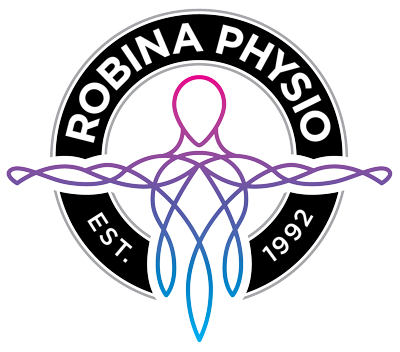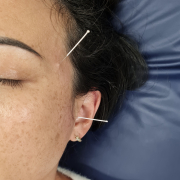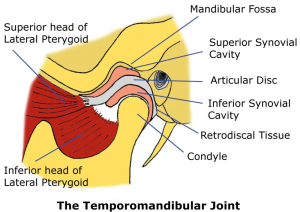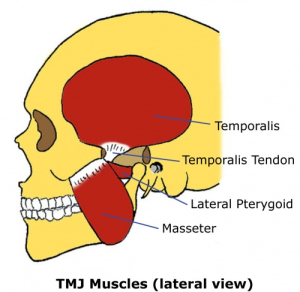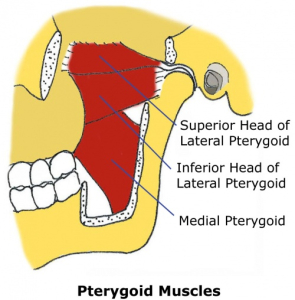TMJ Physio
TMJ Physio
By Aaron Woolley, Physiotherapist
Continuing with the Robina Physio blog series, we now delve into Temporomandibular Joint (TMJ) Dysfunction and the role of TMJ Physio. This intricate joint plays a vital part in essential daily activities like breathing, eating, drinking, and speaking, making it undeniably significant. Often, we overlook its importance until we encounter TMJ dysfunction and the ensuing pain that arises when something goes amiss. Understanding the complexity and importance of the TMJ can help us appreciate the need for specialised care when addressing any issues related to this crucial joint.
TMJ pain often presents with the following symptoms:
- Jaw and/or ear pain
- Neck, shoulder and upper back pain
- Headaches
- Clicking, grinding and popping of the jaw
- Locking of the Jaw
- Limited ability to open and/or close the mouth
- Clenching and grinding of the teeth
- Change to your bite
- Dizziness
Problems with the TMJ can be both acute and chronic in nature, are often painful and can be very debilitating for the individual suffering with TMJ dysfunction. So, let’s dive a bit deeper into what the Temporomandibular joint is and ways to manage TMJ dysfunction.
What is the Temporomandibular Joint?
The TMJ (Temporomandibular Joint) acts as a vital connection between your mandible and the temporal bone of your skull, forming your jaw joint. It is categorised as a condylar, synovial, and hinged-type joint. This classification indicates that the TMJ articulates with the condyles of the mandible and temporal bone, has a joint capsule encompassing the joint, filled with synovial fluid, and is equipped with an articular disc (and retrodiscal tissue). The movement of this joint is akin to a hinge, allowing for proper functioning and mobility.
In addition to its complex structure, the TMJ relies on essential ligaments to provide joint stability. Moreover, the TMJ is supported by crucial muscles, including the Masseter, Temporalis, Medial Pterygoid, and Lateral Pterygoid muscles. These muscles play a vital role in facilitating the proper functioning and movement of the TMJ.
As a TMJ Physio, it is crucial to focus on the relevant anatomy that impacts the joint’s well-being. This includes considering the elements contributing to joint stability, such as ligaments, the articular disc, and retrodiscal tissues, which are often associated with pain in various TMJ conditions. Additionally, the surrounding muscles play a pivotal role in TMJ function.
Among the listed muscles, special attention is given to the Lateral Pterygoid muscle due to its unique significance. Cadaver studies have revealed a direct connection between this muscle and the anterior portion of the joint capsule and articular disc, suggesting it may play a substantial role in TMJ dysfunction. Understanding and addressing these anatomical aspects are fundamental in providing effective treatment and management for TMJ-related issues.
Causes of TMJ Dysfunction
There are many possible causes of TMJ pain and dysfunction some of the more common causes include:
- Inflammatory Conditions: This can involve inflammation of the articular disc (discitis), synovial capsule (synovitis), retrodiscal tissue (retrodiscitis) and muscles and/or tendons. Although technically speaking, when the tendon is involved, this is not actually considered inflammatory and would be termed a tendinopathy. This occurs as a result of chronic teeth grinding (bruxism), clenching, heavy chewing or prolonged mouth opening e.g. during a dental procedure. But can also occur acutely from a direct trauma including a whiplash injury.
- Joint derangement: This involves displacement of the articular disc. This also occurs as a result of chronic teeth grinding (bruxism), clenching, heavy chewing or prolonged mouth opening e.g. during a dental procedure. But can also occur acutely from a direct trauma.
- Displacement with reduction – is when the articular disc displaces anteriorly (forward), bunching up within the joint. At a particular point in the opening cycle the disc will reposition or reduce causing an audible and palpable clunk in the jaw. The jaw often deviates to the affected side when this occurs.
- Displacement without reduction – is a more severe circumstance where the disc does not reduce often causing significant pain and loss of range (ability to open). This is called a closed lock. There typically isn’t associated clicking or clunking with this type but patients do report a clunk at the time the lock occurred.
- Muscle Spasm: Once again, this also occurs as a result of chronic teeth grinding (bruxism), clenching, heavy chewing or prolonged mouth opening and is heavily affected by cervical (neck) posture. This condition is commonly referred to as Trismus (lock jaw) and can be very painful and cause severe limitation to the movement of the jaw even though structurally the TMJ is not affected. Thankfully a properly trained TMJ Physio like at Robina Physio on the Gold Coast can make a big difference to your pain and dysfunction.
- Hyper-mobility: Can be related to laxity of the articular ligaments, joint capsule and articular disc. This laxity often leads to excessive movement of the articular disc, resulting in deviation of the jaw (often away from the affected side). Long term hypermobility can lead to degenerative type changes to the articular disc which can lead to a failure of the disc reducing during closing, causing the TMJ to become stuck open. This is called an open lock and more often occurs after very wide opening such as yawning or very long dental procedures.
- Degenerative Arthritis: This is often due to age related degeneration but can also occur prematurely due to a traumatic injury at a younger age. These changes are visible on X-ray as a flattening of the condylar head of the mandible. Joint crepitus is often felt and heard during opening and closing.
Assessment of TMJ Dysfunction
The TMJ Physio’s at Robina Physio on the Gold Coast regularly work very closely with your Dentist and/or Maxillofacial Specialist. This is especially important to help protect your teeth from and any new or further damage and to arrange additional treatments including occlusal splints and in some more severe cases Botox injections or surgery.
When you visit a TMJ Physio at Robina Physio on the Gold Coast, you can expect to undergo a comprehensive assessment. This will include taking a detailed history and conducting a thorough examination. During the examination, we will assess your posture, jaw position, and tongue placement. We will also palpate the TMJ, muscles, and ligaments, looking for any signs of tenderness, swelling, spasms, or hyper-mobility.
The quality of movement of your neck and jaw will be carefully evaluated, with specific attention given to your bite, range of opening, and any deviations observed during opening and closing. Additionally, we will briefly examine your tongue and cheeks for any indications of clenching, such as scalloping, as well as signs of teeth grinding.
In some cases, further investigations may be necessary, and we may recommend scans of your TMJ using OPG X-rays and/or an MRI of your jaw.
At Robina Physio on the Gold Coast, our TMJ Physios work closely with your Dentist and/or Maxillofacial Specialist. This collaboration is especially important in protecting your teeth from any new or additional damage and in arranging additional treatments like occlusal splints. In more severe cases, interventions such as Botox injections or surgery may also be considered. Our aim is to provide comprehensive care and support to address your TMJ issues effectively and improve your overall well-being.
TMJ Physio Treatments
Thankfully TMJ Physio can be highly effective when targeting TMJ dysfunction and pain. At Robina Physio on the Gold Coast we use a number of modalities with very good results for our patients. Treatment modalities we use include:
- Soft Tissue Release: This includes manually releasing the muscles around the head, neck and jaw through massage and trigger point therapy. We will also teach you how to do some self-trigger point release at home.
- Dry Needling: This involves inserting acupuncture needles to very specific muscles in the neck and jaw. Including the key muscles mentioned earlier in this blog, the Masseter, Temporalis, Medial and Lateral Pterygoid muscles.
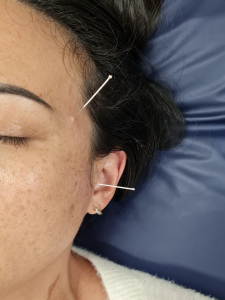
- Muscle Strengthening and Postural Correction: It is important we strengthen the muscles that support your head, neck, scapula and jaw. This involves some very small specific exercises for your jaw and more global exercises for your neck and back. We will also give you extensive advice about ways to help improve your jaw, head and cervical posture.
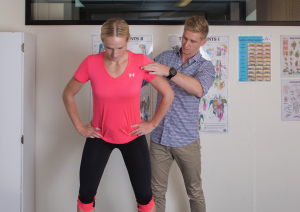
- Adjunct Treatments: These would include treatments from other health professionals including Dentists, Maxillofacial Specialists, GPs and Psychologists. The need for each does vary from patient to patient but its importance cannot be underestimated. For example, in some cases stress may be a major factor, therefore additional support from your GP and/or psychologist will be helpful in addition to your TMJ Physio. We would also consider treatments such as anti-inflammatory medications, occlusal splints and in some cases Botox injections depending on the case.
TMJ Physio Gold Coast
I hope you found this information helpful. The Physiotherapists at Robina Physio are one of the few Physiotherapists on the Gold Coast with additional training in the management of TMJ dysfunction and pain. If your struggling with TMJ issues please don’t hesitate to Contact Us on (07) 5578 7233 or BOOK ONLINE.
